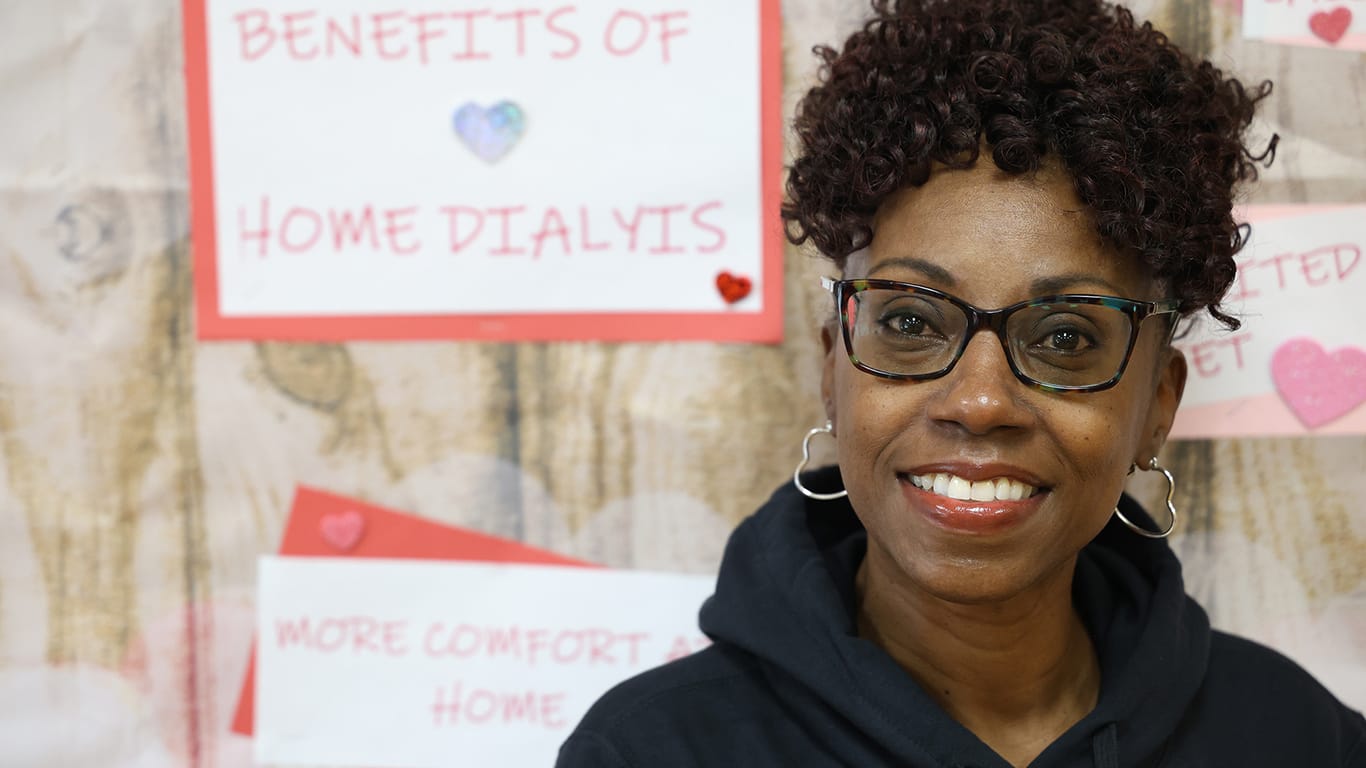Angela Beatty had no idea that her high blood pressure could cause her to go into kidney failure.
As a Black American, Beatty is part of a racial group that is far more likely to experience kidney failure than other racial groups. Black Americans also experience high blood pressure, diabetes and heart disease at higher rates, which can all contribute to the development of kidney disease.
LEARN MORE: 132 Arizona companies make Inc. 5000 list for 2023
“It’s a silent killer,” said Dr. Mandip Kang, a nephrologist at the Southwest Kidney Institute. “Majority of patients don’t develop any symptoms until the kidney function is in the 20-30% range.”
According to the National Kidney Foundation, 1 in 3 Americans are at risk of developing kidney disease, while the Centers for Disease Control and Prevention reports 1 in 7 U.S. adults are estimated to already have chronic kidney disease.
The National Kidney Foundation of Arizona currently offers a free screening program dedicated to kidney disease prevention called Path to Wellness; events are held throughout the state providing free blood and urine testing, as well as chronic management education and one-on-one physician consultations. The service travels throughout Arizona, targeting communities most vulnerable to developing chronic kidney disease (CKD).
“If individuals were to get a screening on their own, it would cost about $600,” said Renee Hynds, the director of patient programs for the kidney foundation. “A lot of people do not have access to those kinds of funds.”
Hynds says that Path to Wellness can hold anywhere from 50 to 200 slots for about three to four events held each year, depending on staff availability and sponsored funding.
“We’re currently in the process of growing the program,” Hynds said. “We understand that if we’re going to help people from getting kidney disease, we need to be out there more.”
According to Hynds, Path to Wellness event locations were previously determined by looking at the United State’s Community Need Index; now they are relying on other tools as well.
“(The Community Need Index) is a rating system to show which communities had the greatest struggles with resources,” Hynds said. “But a big part (of determining location) is when communities come to us.”
The free events can only help those who show up to get the screenings. The CDC reports 9 in 10 U.S. adults with CKD are unaware they have it at all, leading many to believe they are in good health.
Kang, who primarily works with CKD patients, says treatment for kidney disease is different for everyone, as it depends on what’s causing the failure to begin with.
“If it’s (caused by) diabetes, you gear your treatment toward specific medication that will help diabetes and protect the kidney in the long run,” Kang said. “It all depends on the cause.”
According to Kang, the reason for high rates of CKD within minority populations has to do with their high rates of kidney disease risk factors.
“If you look at the Hispanic population, diabetes is usually the No. 1 cause of kidney disease,” Kang said. “Socioeconomic background has a lot to do with any illness. … so wealth does have a lot to do with what kind of medical condition (patients) will develop as they get older.”
High blood pressure, which affects about 55% of Black adults, is the second most common cause of kidney disease, according to the American Kidney Fund.
Beatty, who was 50 at the time of her diagnosis, was prescribed blood pressure medication in 2019 after experiencing issues with her urinary system. When an ultrasound of her kidneys showed no abnormalities, Beatty assumed she was in good health.
“I thought that everything was fine with my kidney based on the ultrasound,” Beatty said. “But then over a period of a year or so, I wasn’t taking my blood pressure meds consistently. I felt fine, so I didn’t think that anything was wrong.”
When the COVID-19 pandemic made it difficult to continue with follow-up appointments, Beatty figured risking the virus was worse than seeing the doctor for what she thought of as a simple case of high blood pressure.
“Every now and then I felt tired,” Beatty said. “I would check my blood pressure every now and then and notice it was high, so I just thought the meds weren’t working. But I still felt OK.”
By late 2021, Beatty began to feel ill.
“I was having symptoms of loss of appetite,” Beatty said. “I started having a metallic taste in my mouth and I just felt weak. That’s when I said: ‘It’s time to go back to the doctor’.”
But Beatty was already too late. When she finally arrived at the hospital, she was immediately put on emergency dialysis. Her kidneys were in deep failure.
“(The doctor) told me the next test was supposed to be the biopsy, and we never got to that point,” Beatty said. “That would have been where they figured out there was a more serious thing going on with the kidney, so I wasn’t aware of that.”
Prior to her diagnosis, Beatty was unaware of the increased risk Black Americans are at for developing kidney disease, especially those with underlying conditions.
“It was shocking all around,” Beatty said. “I don’t have any family history (of CKD) that I’m aware of, and I didn’t know the link between high blood pressure and kidney disease.”
Today, Beatty receives dialysis three times a week and has made significant changes to her diet in order to avoid relapsing.
“That was difficult,” Beatty said. “All my life I’ve been able to eat whatever I’ve wanted to eat. … At the dialysis center, they’re constantly monitoring and taking blood to make sure my levels are good.”
Dialysis treatment usually takes around four hours to complete and is essential for removing waste and excess fluid from a patient’s bloodstream. It is not considered a cure for kidney disease or kidney failure, and according to the National Kidney Foundation, the average life expectancy for a person on dialysis is five to 10 years.
Although Medicaid and Medicare cover some of the treatment costs, dialysis can be especially expensive if a patient is uninsured.
“I’m grateful to have great health insurance through my employer,” Beatty said. “But in underserved communities, people don’t have quality health insurance. … They don’t have the resources that other people may have in other types of communities where they have better health care.”
Kang said it’s common to come across patients who are unable to afford the medications they need to avoid kidney failure.
“If I prescribe a medication that’s several hundred dollars, they’re going to tell me they cannot afford it,” Kang said. “So they don’t get the same benefit that another person gets with good insurance who comes from a good educational background.”
Despite these ongoing disparities, Beatty said that she shares her story to inspire others to take control of their health, especially Black Americans who may be unaware of their propensity to CKD.
“You have to be your own advocate,” Beatty said. “I also tell people to get (kidney function) tested because in the health field, (doctors) won’t request certain screenings unless they feel there’s a reason. You have to stand up for yourself and say, ‘This is what I want done.’”




